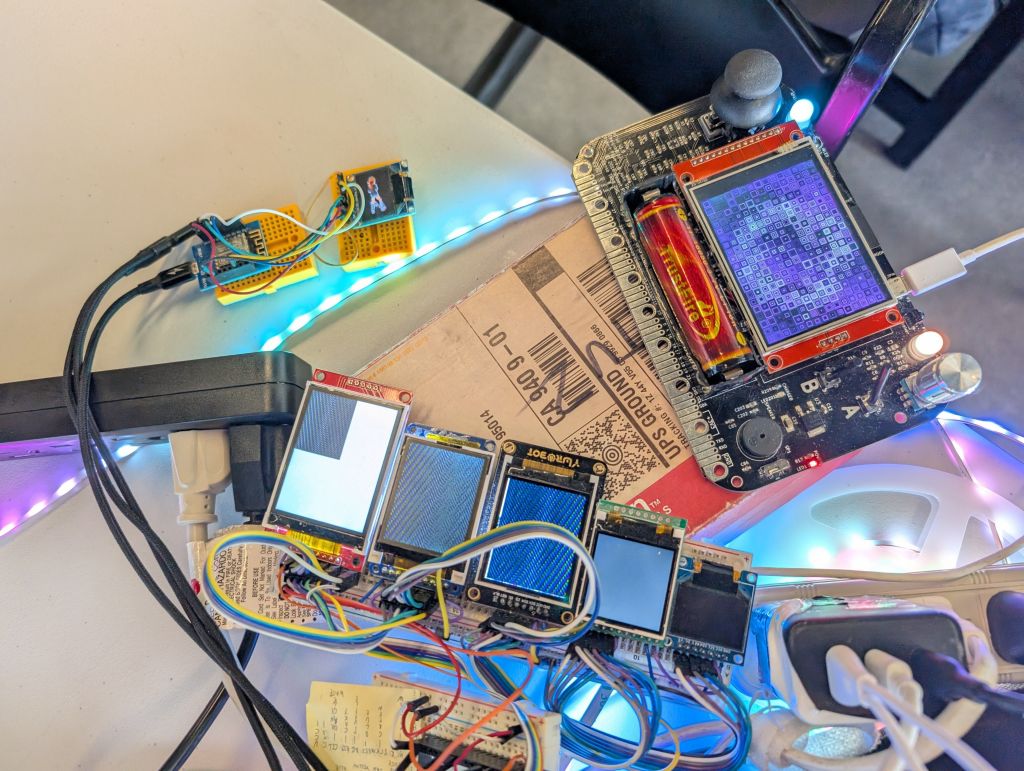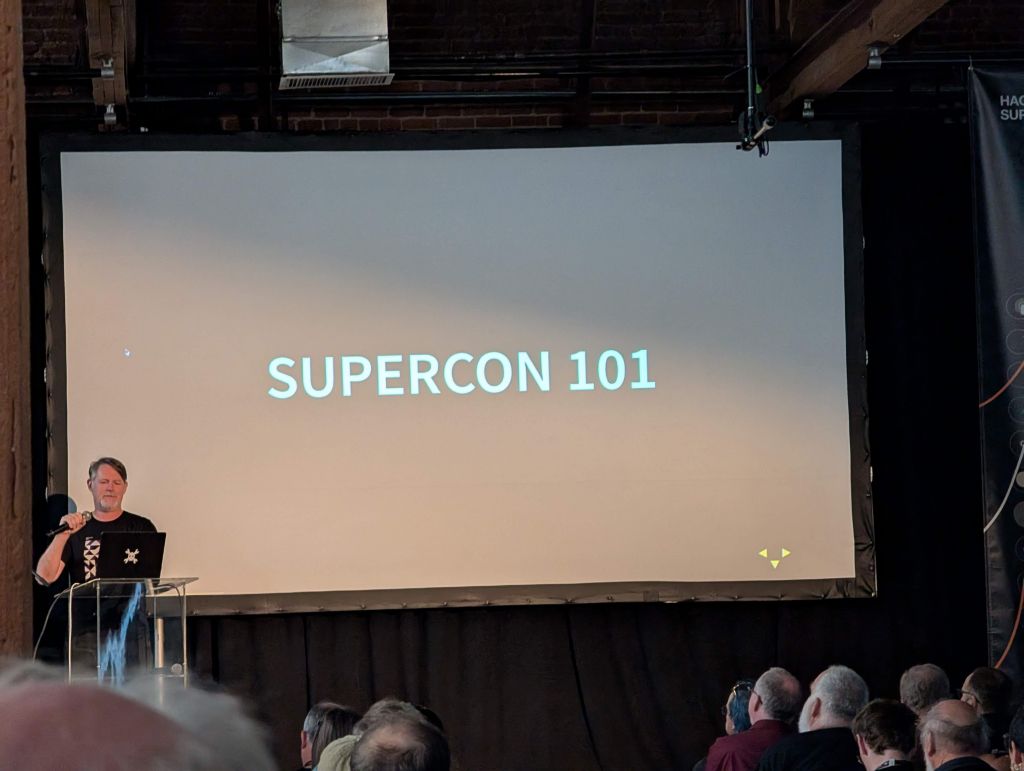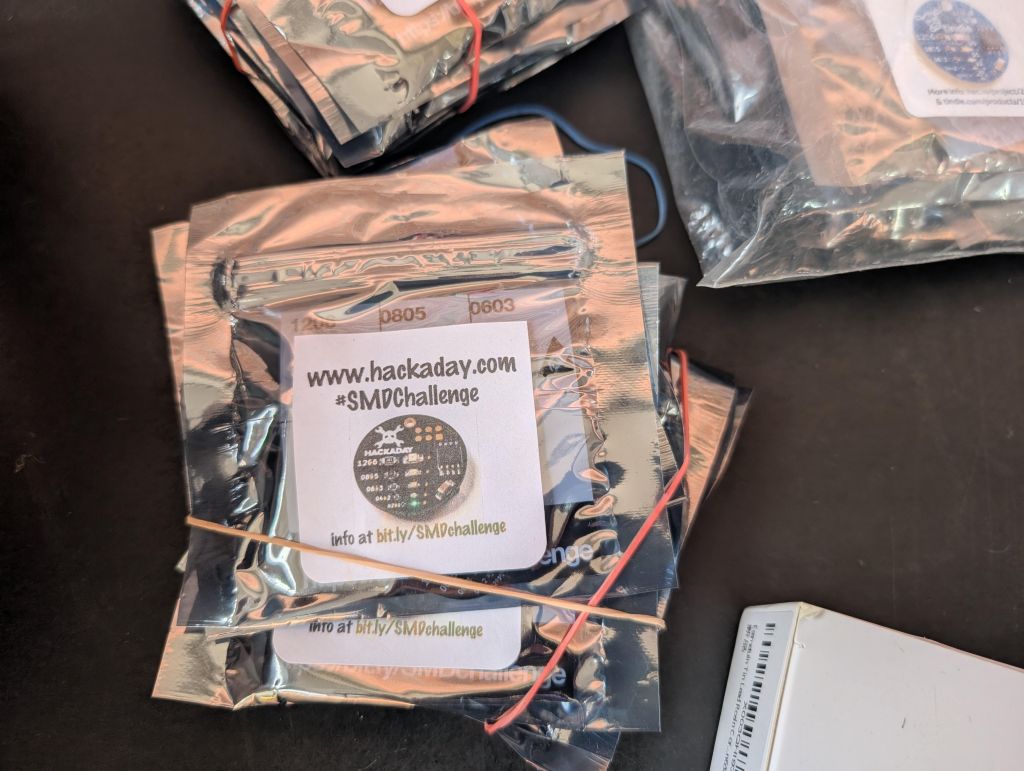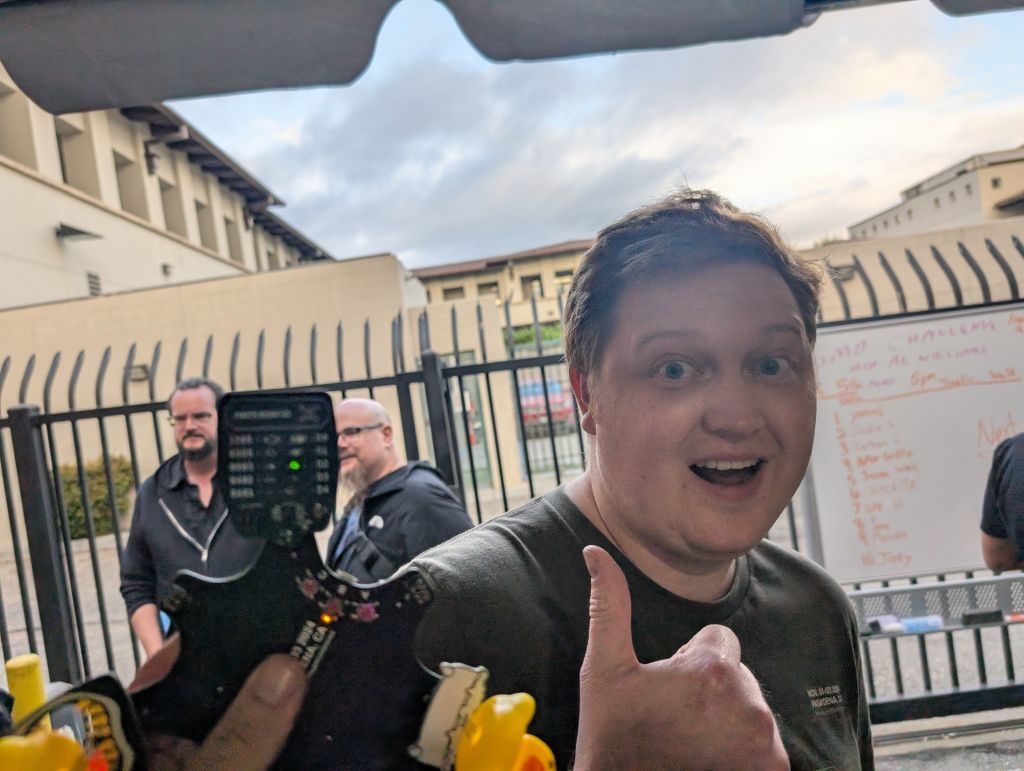![]()
found a hat big enough that it mostly fits on it
![]()
of course, it needed a few LEDs :)
![]()
what it looked inside and it worked with a small 1S 700mAh lipo (although not long enough)
![]()
bigger battery upgrade, and BTW those batteries lie, they are only 1600mAh
![]()
testing battery draw, a bit over 0.5A which is a bit too much
So, why 3-4V lipos instead of USB battery packs with 5V that is expected by both the panels and neopixels/WS2812? Well, space is limited, USB battery packs are kind of big, and carry extra hardware to recharge that isn't needed inside the hat. There is also a side byproduct that powering both the panels and the LEDs with a lower voltage, limits their brightness and the amount of power (watts) they need, which means that a 16Wh lipo inside a USB battery pack stepped up to 5V, makes everyting brighter, but only lasts about half as long as powering directly from the lipo at lower voltage.
![]()
bigger 4Ah 1S lipo worked for 8H at full power and LEDs worked all the way down to 2.8V!
![]()
panel worked all the way down to 3.4A before colors went wrong, 16H on a 1.6Ah battery
![]()
of course now I had to find a buy a faster 1S lipo charger with the right connectors (had to get JST adapters)
![]()
quick test that a smaller 700mAh battery would last around 5H before things got dim
After testing, I was able to confirm that both the $7 amazon controller (SP002E from https://www.amazon.com/gp/product/B09Y8SWJ77 ) and the RGBpanels, work fine with lower voltages (which is not a given since both run a microcontroller that was originally meant to be powered from 5V).
The RGBPanel controller is a bit more picky about voltage and reboots around 3.5V, while the neopixels tend to drag the battery voltage down, causing the RGBPanel to crash and reboot when a single battery runs both, so I gave it its own lipo.
Pixels still take 0.3 to 0.5A (I use a potentiometer to dial them down as the cheap controller I put has no dimming control) and the RGBPanel takes less than 0.1A, so that's nice (it actually goes all the way down to 0.05A or just 50mA) when the voltage drops.
The combined tricks should give around 18H of runtime with the 2 batteries (4Ah and 1.5Ah 1S lipos), which is enough for 17 hours of dreamstate (they are not screwing around this time, 17H !!!)
About the neopixel controller, I used a cheap $7 amazon controller that only had 3 physical buttons but sadly no dimming control, mostly because I wanted something very small, and while pixelblaze micro is also small, it doesn't have the pattern I want, and I didn't see the point of programming a pattern I already had on the other controller, so I just put a potentiometer to lower the voltage. It's obviously the wrong way to do it, but it works :)
Here is the end result:

















































































